trompe l'oeil murals
Trompe l'oeil Murals are a form of illusionistic painting that have been used since the dawn of civilization to enhance the interior and exterior of the built environment. We undertake commissions for interior designers, architects, corporate and private clients.
trompe l'oeil mural portfolio images:
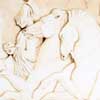 Trompe l'oeil mural of the Parthenon frieze
Trompe l'oeil mural of the Parthenon frieze
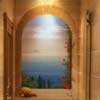 Mural painting of the Bay of Carthage and stone arch
Mural painting of the Bay of Carthage and stone arch
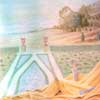 Decorative mural of swag and parterre
Decorative mural of swag and parterre
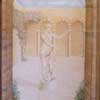 Trompe l'oeil mural a courtyard scene
Trompe l'oeil mural a courtyard scene
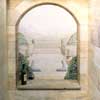 Mural window view of gardens and mountains
Mural window view of gardens and mountains
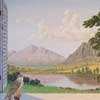 Mural painted on canvas, a landscape with mountains.
Mural painted on canvas, a landscape with mountains.
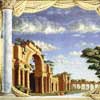 Neoclassical mural view of Roman ruins and landscape
Neoclassical mural view of Roman ruins and landscape
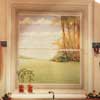 Mural painting view through a window trompe l'oeil
Mural painting view through a window trompe l'oeil
 Children's mural detail of monkey above jungle scene
Children's mural detail of monkey above jungle scene
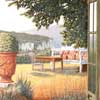 Trompe l'oeil Mural view of Provencal scenery.
Trompe l'oeil Mural view of Provencal scenery.
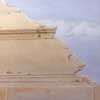 Wall mural of trompe l'oeil stone architecture
Wall mural of trompe l'oeil stone architecture
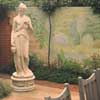 Garden wall mural painted with statues and plants
Garden wall mural painted with statues and plants
murals in use
Generally a trompe-l'oeil mural will extend the sense of real space by means of the fictive or illusory painted wall or ceiling. Used as an integral part of a design, mural decorations have the power to transform the appearance and character of a room in a unique way which no other art form can replicate. In general terms a mural is an art work which is lived within, as opposed to being merely examined through the portal of a frame. It is this fact which makes the painted wall a more immediate and intimate experience than that of a picture in a frame, where convention dictates a certain relationship involving the complicity of the viewer and the suspension of our normal perceptions of reality. This is in short, an agreement to look into the view via the conditions of service of the frame. Murals in general are not framed and as such become integral to the building interior instead of separated from it by some boundary or bordering device. Murals are therefore site specific art works and as such should serve the overall design and the purpose of the whole space. It is the work of the mural artist to create and execute a design that fulfils the clients wishes and the demands of the space.
Usually the muralist seeks to exploit the methods potential to enlarge the space, deliberately blurring the boundary between the living area and the fictive elements of say a painted landscape or garden. This works as an ideal solution for creating views in windowless rooms or for homes in the city where pleasant views are lacking. The painted illusion of continued space can be used effectively for hallways ending abruptly in a blank wall, to disguise jib doors, and generally to create a feeling of light and volume.
Often trompe-l'oeil murals are linked stylistically to the architecture of the building. The muralist might create the painted illusion of architecture (quadratura) that integrates with the existing environment so that the eye is drawn in a seamless manner from the actual space into the fictional area of the mural itself.
On occasion the muralist will include ludic and humorous elements, contiguous with the playful deceit inherent within the genre, thus themes and memento of significance to the commissioner or the geo-location of the work make regular appearance in wall murals the world over.
Style and media are carefully chosen, whether oil, acrylic or faux fresco, to match the overall effect required. Mural paintings are either executed directly on the wall, painted on panel, or prior painted on canvas which is then stuck to the wall in a process called marouflage.
decorative murals
Not all murals are trompe-l'oeil, many are abstract, or even figurative and lack the intention to 'deceive the eye'. Such works can equally enhance the interior, and painted murals such as Lord Weymouth's extraordinarily vibrant and exciting decorative murals or the works of Leonard Brosman or Frank Brangwn amongst others are ample testament to this. This kind of decorative artwork provides unequalled opportunity to invite unusually large scale themes, and areas of colour and texture into the interior environment, or in some cases onto the exterior of buildings.
murals: historical overview
Trompe-l'oeil murals have been used for decoration since antiquity as the preserved works at Herculaneum illustrate. But it is probably with the renaissance rediscovery of linear perspective that the modern form really begins. The early renaissance Florentine Alberti and others formalized rules of perspective which facilitated the realistic vistas and renditions created in trompe-l'oeil murals during the Renaissance and more significantly the Baroque Period which saw perhaps the form reach its pinnacle of ambition and execution.

